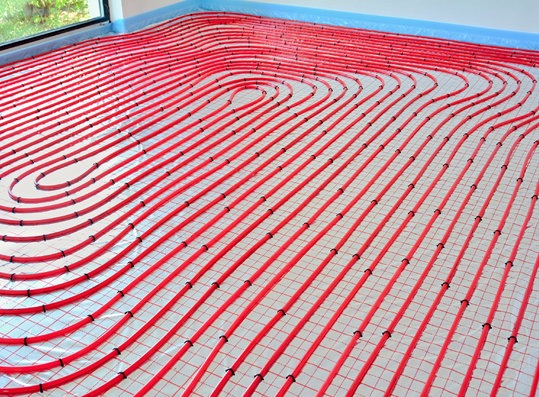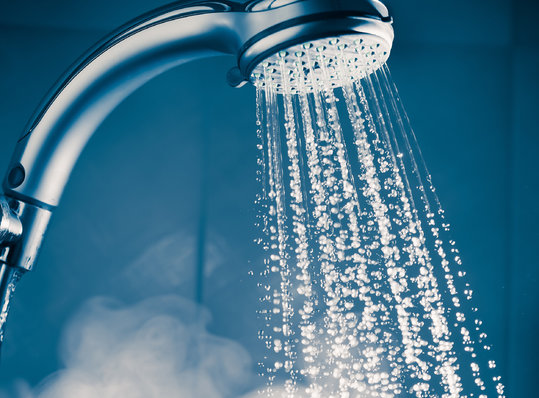Design considerations when using heat pumps
A heat pump is most efficient at making low temperature water. As you ask it to make hotter water its efficiency (or COP) falls, as does it's output.
So to supply underfloor heating at 35ºC when it's 7ºC outside the COP - the efficiency - of an 8.6 kW heat pump - is 4.6. So for every 1 kW of electricity you put in you get 4.6 kWh of heat out.
If you supply that heat at 55ºC instead then the COP drops to 2.75 - to be fair this is still a good COP.
So anything we can do to increase the size of the "emitters" (the things that give out heat in the house) will make the system run more efficiently - and so will save you money.
Emitters can be radiators, underfloor heating, heated skirting and so on. The smaller the emitter, the higher the temperature needs to be to get the heat needed into your house. The larger the emitter the lower the temp needed.
When people shove a heat pump into an old house and don't also upgrade the radiator system what you get is an inefficient system that costs more to run and may also not heat the house when it's really cold. This is a typical problem which can give heat pumps a bad reputation - when it's not actually to do with the heat pump, it's to do with poor installation design.
This isn't such a problem with stoves or pellet boilers because they "like" making water at high temperatures - so you can more or less install one as a replacement for an existing oil or gas boiler, and it’s likely to work.
Sizing the pump
Now there's something else to take account of. Which is that when it's really cold this effects the output, flow temperature and efficiency of a heat pump - this is especially the case for an air source heat pump because air will tend to get a lot colder than the earth or running water.
So looking at the graph below you can see when it drops to around -8ºC our max temp is 55ºC. The total output of the heat pump also changes depending on the outside temp - it drops as the temp drops.
So it's vital that when we size a heat pump that we take account of this.
Now there are very few days of the year here when it's that cold, but we need to make sure that we size the heat pump correctly for those coldest days.
AND
We need to make sure that the heating and hot water system can function at 55ºC when it's really cold. So if there are existing radiators that means adding in extra radiators, or making them bigger to increase the surface area.
Now by far the most efficient option is connecting to underfloor heating - the surface area of a floor is so big which means that we can reduce the flow temperature of the heating system to 35-40ºC and it will still work well.
That's why it's a good idea to design the heating system in the house so that it can operate well at 55ºC.

Water for washing
For hot water for showers and washing our preferred option, when using a heat pump, is to install a direct hot water cylinder. In a direct cylinder the water you use is the water in the tank and the heat pump heats the tank up via a coil. Because the entire volume of water in the cylinder is being supplied to your taps this allows us to heat the hot water cylinder to a slightly lower temperature than with other types of cylinder - which then keeps the system running more efficiently.
